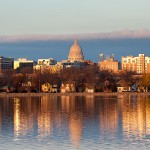“The big question is whether you are going to be able to say a hearty yes to your adventure.” – Joseph Campbell.

My hypotheses are anecdotal, since most of my clients are from New Jersey and New York. One of the most curious observations about these clients is that they often do not share the affection for their state schools that one sees in many parts of the country. This could be because neither state offers the “rah-rah” factor of championship sports teams that is important to so many students (Rutgers’ recent joining of the Big Ten has not yet created a powerful draw for school spirit oriented applicants). The Rutgers and SUNY campuses generally do not win college town beauty contests or fabulous weather, despite excellent academic programs and proximity to home. SUNY Binghamton’s attractive in-state tuition of $9K and Rutgers’ $14K (Fall 2015) do not seem to be enough to keep applicants in their home states.
Given the egregious rising costs of private universities and liberal arts colleges, I believe that many families are willing to shop around for out-of-state public schools before considering to the private school option. I feel that they are hoping to find a public school that is preferable to their home state’s university that is, after all, still much less expensive than a private school. These families are not considering the fact that many private schools can offer significantly higher levels of institutional merit and need-based aid than public schools can, to reduce sticker price.


I am happy that students are becoming adventurous enough to explore other parts of the country during their college years. In a “global” era in which most students study abroad, I am saddened to see timid provincialism in college choice. Northeast students do not seem afraid to move south, and are refreshingly eager to embrace the Southern culture. I scratch my head, however, when that eagerness is not applied to the Midwest; I have heard applicants who have visited Midwestern campuses say, “It’s so flat,” or “the people are too nice.” The Midwest is wholesome, but perhaps not sexy enough, to be the place a kid from the New York metropolitan area wants to choose to spend four years.
That said, I recently analyzed the top 100 national public universities ranked by US News & World Report. Obviously, public schools vary in quality, as ranked by US News and by their ability to attract, or willingness to accept, out-of-state students, as indicated by BigFuture by College Board. Some universities charge a huge premium in tuition for out-of-state students, while some do not. Based on reviewing these three factors, I drew some interesting conclusions:
1. Best Values for Out-of-State Students Highly ranked state schools with less than $30K out-of-state annual tuition include: U Minnesota Twin Cities, SUNY Binghamton, SUNY Stony Brook, Ohio State U, U Florida, and North Carolina State Raleigh. Highly ranked state schools with less than $35K include: Georgia Tech, Wisconsin Madison, U Georgia, Clemson U, Purdue U, Illinois Urbana-Champaign, U Maryland College Park, UNC Chapel Hill, U Washington, Penn State, U Delaware, U South Carolina, U Tennessee Knoxville, and Indiana Bloomington.

3. Best Schools with Less than 50 percent of Student Body Coming from In-State: U Vermont, U Delaware, and U Alabama.

My top five favorite hidden gems from this analysis of public universities include:
- Wisconsin Madison: US News ranking of 41 (eleventh of all publics), 67 percent of student body from in-state, $30K out-of-state annual tuition. For comparison, U Michigan impressively ranks 29 (fourth of all publics) but its out-of-state tuition is $43K, $52K more than the Cheeseheads over the course of four years. Both schools are situated in magnificent college towns with nonstop flights from the New York area, offer excellent academics and exciting Big Ten sports. And with so many Early Action applicants being deferred from Michigan, it might be a good idea to try Wisconsin instead.
- Penn State: US News ranking of 47 (fourteenth of all publics), 69 percent of student body from in-state, $31K out-of-state tuition.
- U Conn: US News ranking of 57 (nineteenth of all publics), 78 percent of student body from in-state, $35K out-of-state tuition.
- U Minnesota Twin Cities: US News ranking of 69, 73 percent of student body from in-state, $22K out-of-state tuition. The Golden Gophers’ out-of-state tuition is within striking distance of Rutgers’ $14K in-state, with a higher ranking (69 versus 75). For those who don’t think they can deal with Minneapolis snow, its annual snowfall is 54.4 inches, not much more than Boston’s 43.3 or State College, PA’s 49.7. Minneapolis gets less snowfall than Ithaca, New York’s 65.2, and way less than Middlebury, Vermont’s 116.2; Syracuse, New York’s 123.8; and Boulder, Colorado’s 193.3. Hats off to thee, Minnesota; you’re going to make it after all.
- U Delaware: US News ranking of 75 (twenty-ninth of all publics), 39 percent from student body from in-state, $31K out-of-state tuition.
For more insights about the best values among public universities, I recommend regularly reading Kiplinger’s College Channel and Lynn O’Shaughnessy’s blog, The College Solution.


